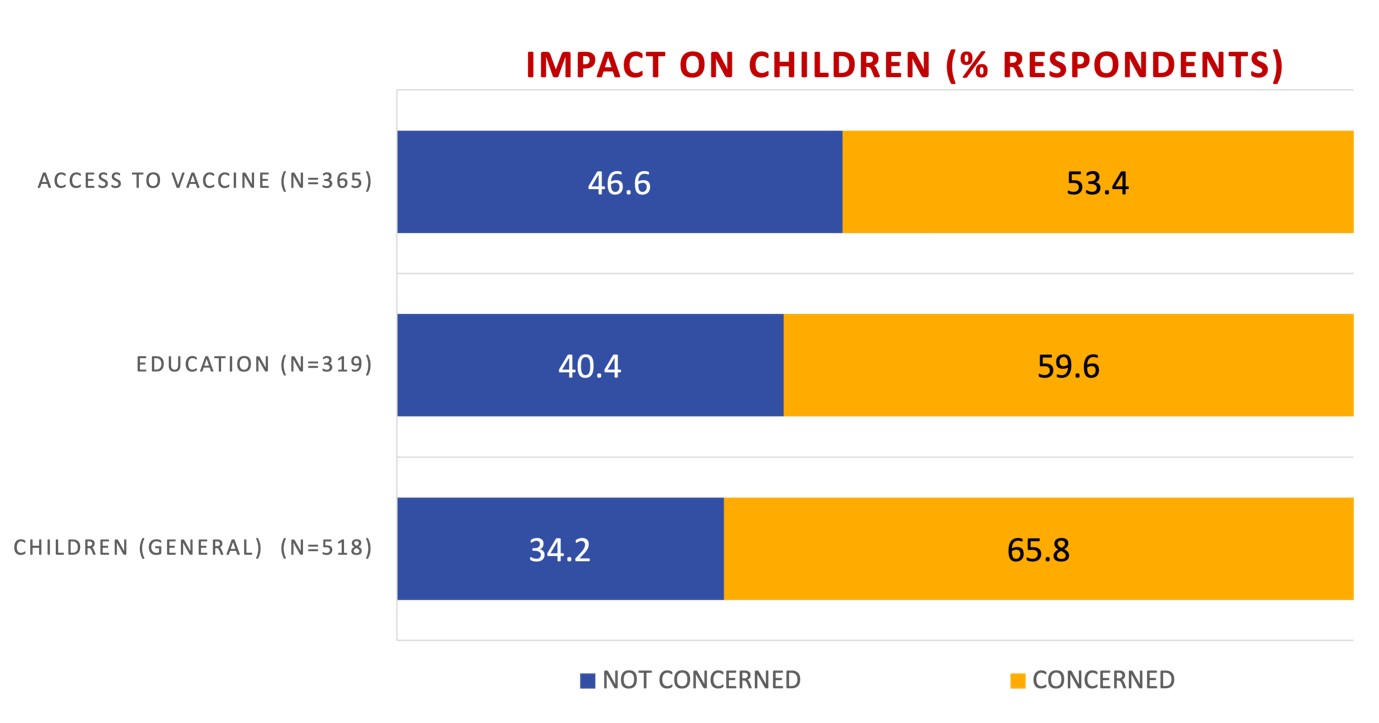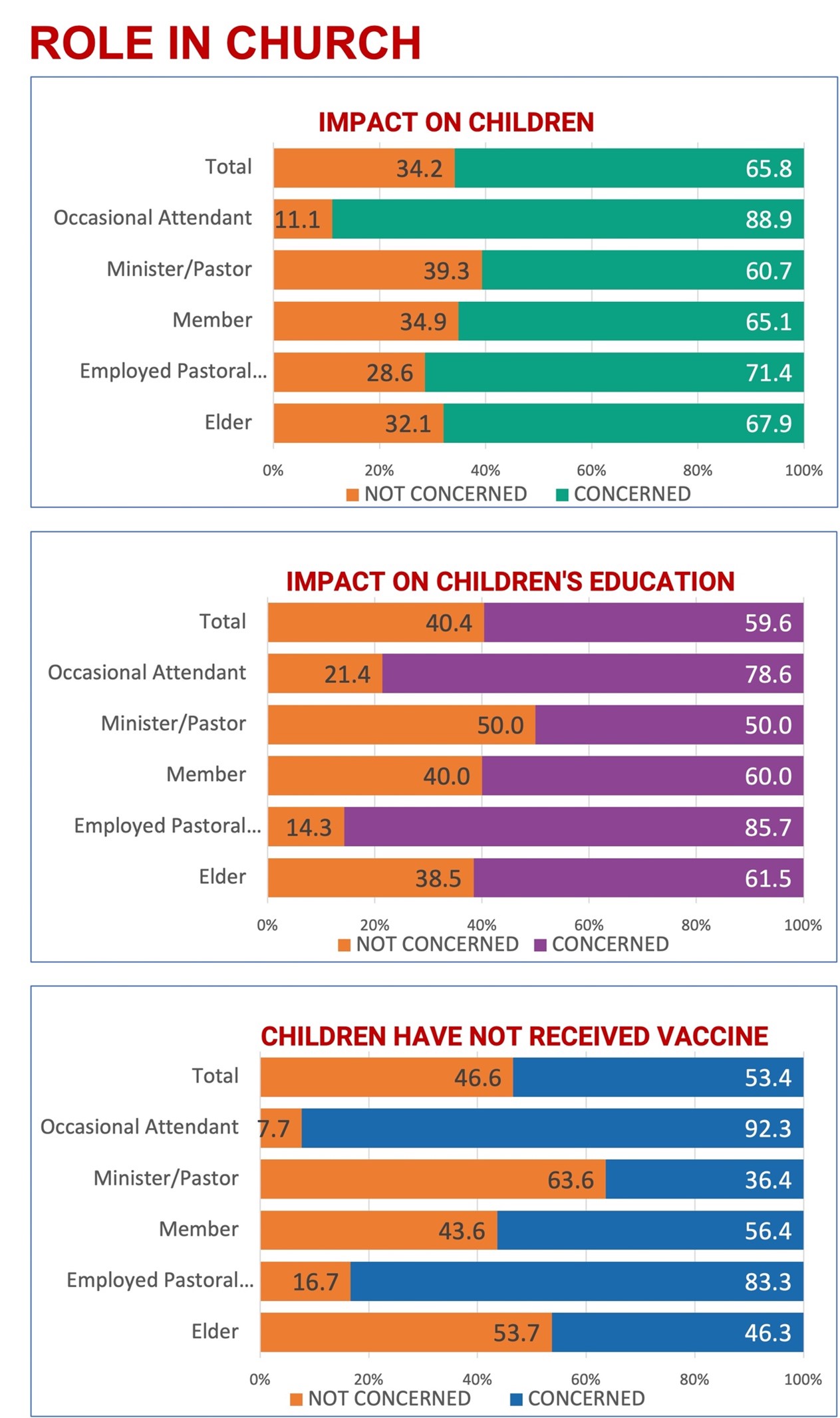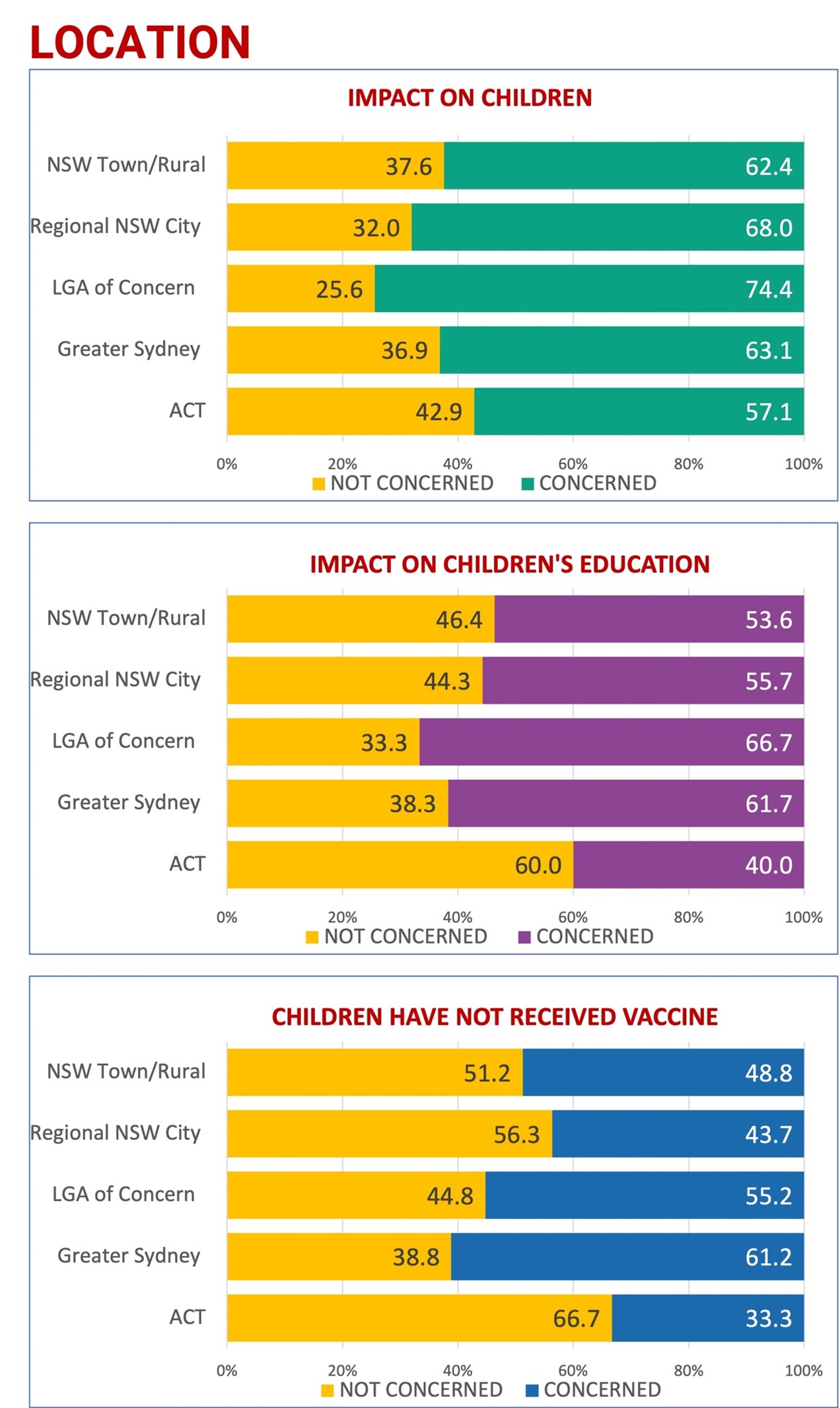
This is the third report on the results of the G,S&C survey* conducted last month ( (Click here for Part 1 – Christian Connectedness Click here for part 2 – Mental resilience).
Of the first 800 respondents to the GS&C Pandemic Impact survey, 518 people had children who lived with them.
To ascertain the impact of the pandemic on children, we collected information to determine if there was concern about:
- children in general.
- children’s education, and.
- children’s access to vaccines.
We correlated this data with the respondents’ role in the church, gender, and location to ascertain where there might be pockets of concern.
A summary of the data for the entire group that responded to the items regarding children are summarised in the graph below. Approximately two thirds of respondents (65.8%) were concerned about access to vaccines for their children. This concern was similar for those with children of all ages up to 20 years. Of note, although more than half of the respondents were concerned about the impact of the pandemic on their children (53.4%), there was greater concern about the impact on children’s education (59.6%).

The area of the bars in blue indicates the proportion of people who did not share a concern in each domain. The area in yellow indicates the proportion of people for who this domain was a concern. These graphs represent the relative percentage in each domain.
Role in Church
We examined the level of concerns about the impact on children based on the roles of the respondents in the church. In all domains, there was substantial concern about the impact of the pandemic on children. In all domains, ministers were least concerned with respect to the impact on children.
In general, ministers (60.7%) were least concerned about the general impact of the pandemic on their children while occasional attendees (88.9%) were most concerned. There was significantly greater concern among employed pastoral staff (71.4%) than ministers.
With respect to the impact on children’s education, ministers were again the least concerned (50%), and significantly less concerned than any of the other groups. In contrast, employed pastoral staff (85.7%) were most concerned followed by occasional attendees (78.6%); these two groups were significantly more concerned than any of the other groups.
With respect to access to vaccines for children, ministers were again least concerned (36.4%) while occasional attendees (92.3%) and employed pastoral staff (83.3%) were most concerned, significantly more so than the other groups.
The area of the bars in orange indicates the proportion of people who did not share a concern in each domain. The area in green, purple, and blue indicate the proportion of people for whom this domain was a concern. These graphs represent the relative percentage in each subgroup.

Location
The location of the respondents was also correlated with concerns about the impact on children. In all geographical locations, there was considerable concern about the impact of the pandemic on children.
Regarding overall impact on children, there was most concern in the LGAs of concern (74.4%) and Regional NSW (68%) while the smallest proportion of concerned respondents were in the ACT (57.1%).
With respect to the impact on children’s education, most concerned respondents were in LGAs of concern (66.7%) followed by Greater Sydney (61.7%). There were least concerned respondents in the ACT (40%).
With respect to access to vaccines for children, most concerned respondents were in Greater Sydney (61.2%) followed by LGAs of concern (55.3%). There were least concerned respondents in the ACT (33.3%).
The area of the bars in yellow indicates the proportion of people who did not share a concern in each domain. The area in green, purple, and blue indicate the proportion of people for whom this domain was a concern. These graphs represent the relative percentage in each subgroup.

Gender of Respondents
The respondents’ gender also correlated with concerns about the impact on children. Regarding concerns about the impact on children generally, and specific to education, both men and women were equally concerned. However, women were significantly more concerned (64.5%) about access to vaccines for children than men (44.2%).

You are still able to complete the survey using this link. We will update the data as appropriate.
Top Photo: Olya Kobruseva from Pexels
*Limitation of the Survey
Surveys are a reliable and efficient means of measuring sentiment, challenging/validating assumptions, obtaining opinion and monitoring change over time. They are frequently used to inform local debates and decisions, and to measure impact and support of policies and initiatives. They can also provide evidence to determine appropriate initiatives.
However, as with all methods of data collection, surveys have limitations. We have summarised a few key limitations here but are also aware that there may be others.
- Firstly, while we can quantify the perceptions of respondents, interpretation of the results is both complex and challenging without the opportunity to follow up with discussion. We need to be reminded that this data is a measure of perceptions of people only and are relevant to a particular time.
- Secondly, the survey was distributed via email and social media. We accept that this distribution methods limit access to the survey.
- Thirdly, we accept that the questions may be phrased in ways that were challenging for some people.
- Fourthly, we are mindful not to introduce our biases in reporting the data to you. Hence, we provide in these reports a summary of the data without interpretations of what it could possibly mean. We will discuss our interpretations in upcoming blogs, papers and seminars.
